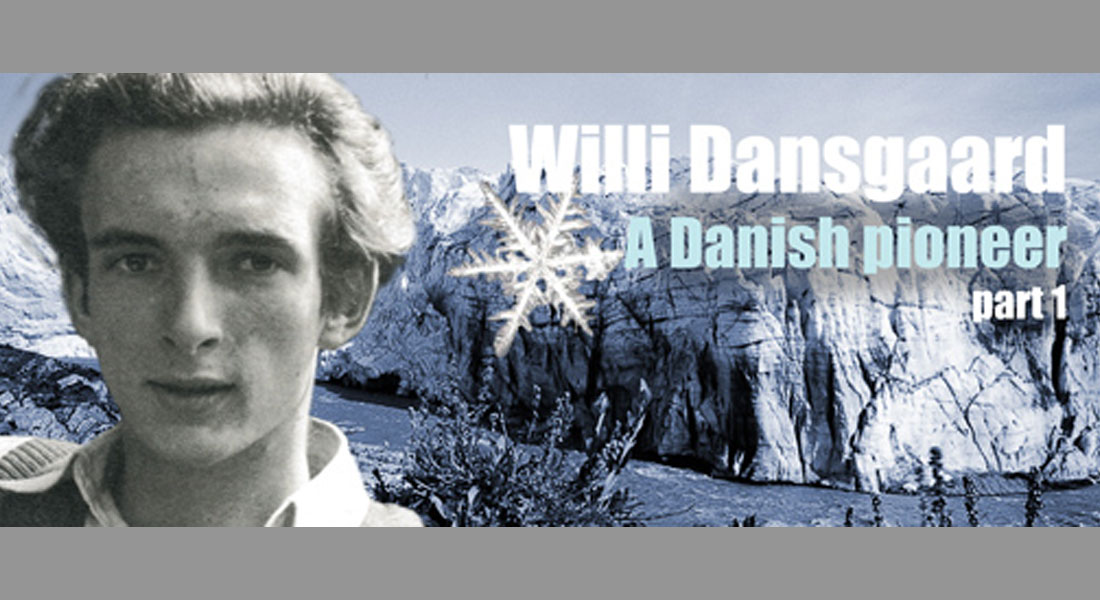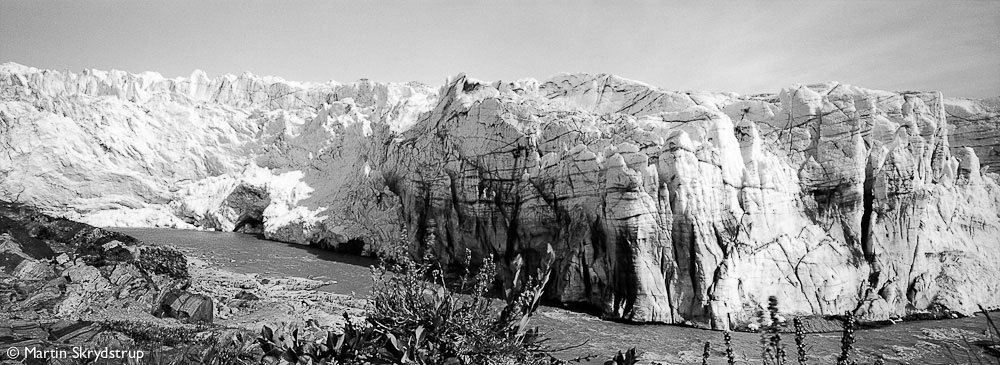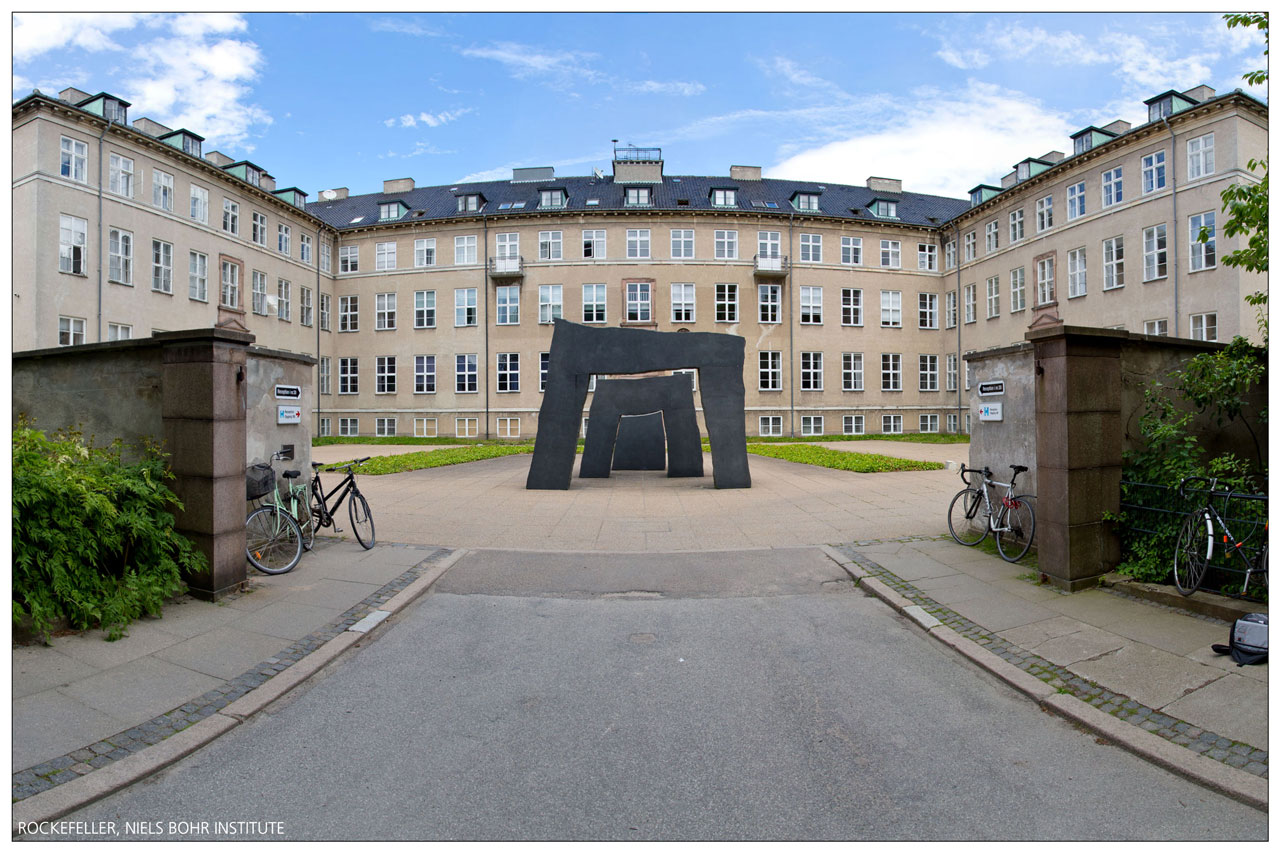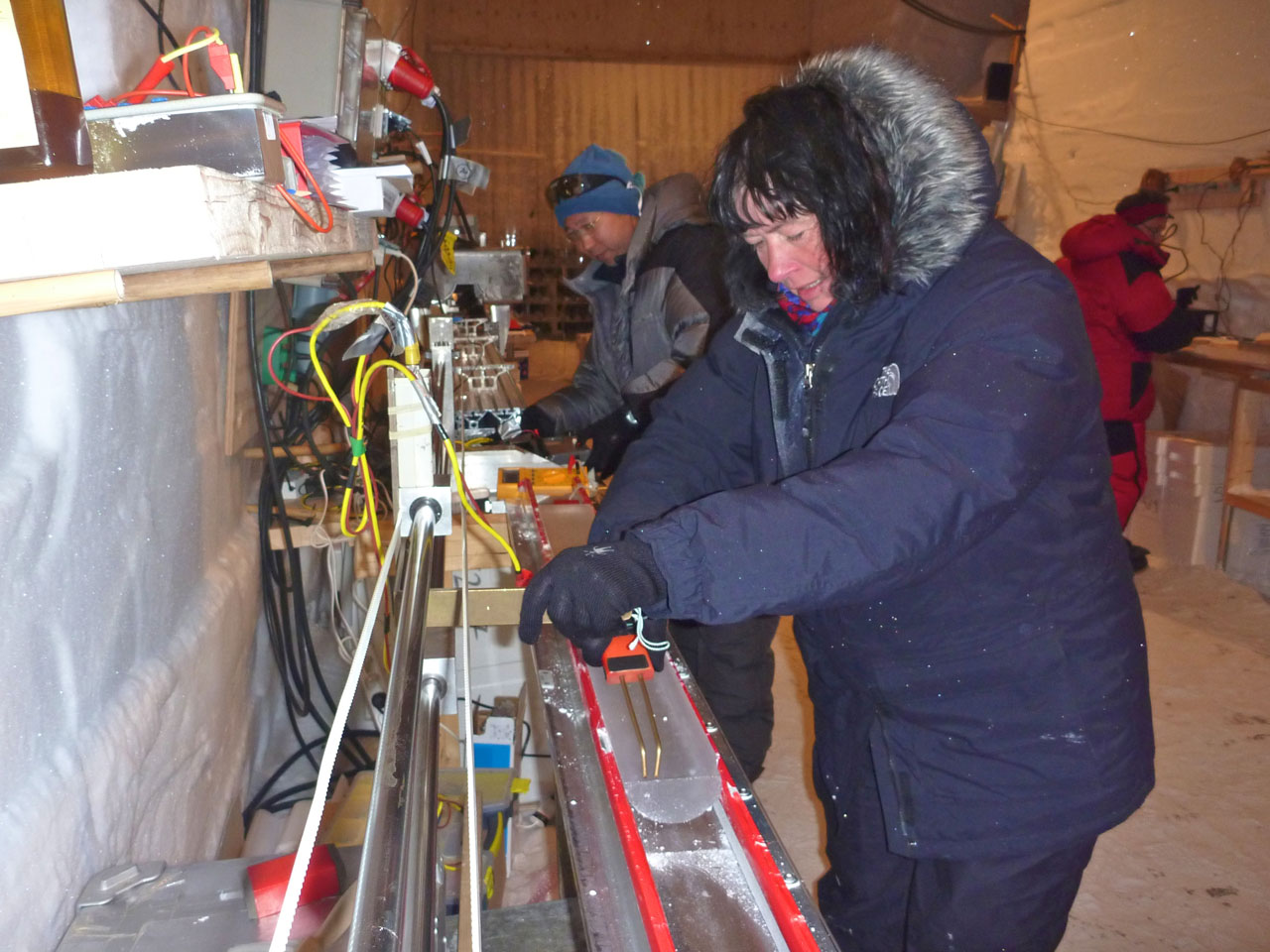A Danish pioneer
Danish Willi Dansgaard was the first to realise that ice cores drilled from the ice sheet could contain information about past climate. In this way, he created an entirely new discipline in geophysics and laid the foundation for all subsequent ice core research.

The seeds were laid as early as 1952 when Dansgaard, using a beer bottle and a funnel in the garden, collected rainwater from a passing frontal system and discovered the ratio between two oxygen isotopes in the rain and the temperature in the cloud when the precipitation is formed.
It later turned out that you could use ancient water (in the form of ice) in this way to determine past temperatures.

The idea was pioneering and became a world sensation in 1968 and beyond, when Dansgaard published his results from the analysis of an ice core from the world’s first deep drilling at Camp Century in northwestern Greenland. In the following 20 years, Willi Dansgaard headed up several drillings on the ice sheet and gave Denmark a leading role in ice core research.
Willi Dansgaard’s curiosity, ingenuity and ability to seize new opportunities made him one of one of Denmark’s most important and innovative scientists of the 20th century.
The beginning
Willi Dansgaard was born on Amager in 1922 to parents who had an engraving business. In 1941, he graduated and then he began to study mathematics, physics, chemistry and astronomy at the University of Copenhagen.
Dansgaard describes the program as “poorly organised” and it is first when he begins to study experimental physics and moves over to the Biophysical Laboratory at the Rockefeller Complex on Juliane Maries Vej that that he settles in.
Here ”the students grew from being numbered foreign elements to being people,” he says in his autobiography and it is here that he first tries his hand at “real” research when he starts working as an assistant to the biologist and entomologist Dr. Tetens-Nielsen.

”Two days later I accepted the offer. Three weeks later I married Inge Thomsen. And four months later we travelled with the M/S Disko to Godhavn in Greenland. Each of these three events had a big impact on the rest of my life,” he explains.
In 1946, the young man receives a ‘gold medal’ for solving a prize assignment about dose measurements for radiation therapy and in May 1947 completes his final exam with such good results that one of the censors, the Director from the Meteorological Institute, offers Dansgaard a job and the opportunity to go to Greenland.

Centre for Ice and Climate

